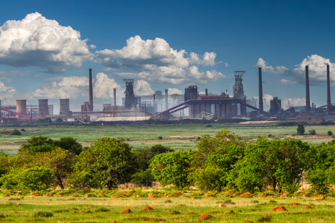#集团新闻
9M-2025: Coface records year-to-date net income of €176.3m
Coface records year-to-date net income of €176.3m, of which €52.1m in Q3-25; annualised ROATE at 12%.

探索科法斯全面的风险仪表板,为 160 个国家和 13 个产业部门提供深入的风险评估,以做出策略决策
#集团新闻
Coface records year-to-date net income of €176.3m, of which €52.1m in Q3-25; annualised ROATE at 12%.
#集团新闻
Coface releases its half-year financial results for 2025 with an annualised return on tangible equity at 12.6%.
#集团新闻
Coface publishes its Q1 2025 financial results, with a net income of €62.1m, for an RoATE of 12.7%. Turnover is €473m, up 2.0% at constant FX and perimeter.
With the rise of next-generation dashboards and connectivity solutions, commercial risk management is experiencing a paradigm shift: more intuitive, more responsive and more collaborative. From reporting to governance, discover how to harness the power of dashboards to steer your business with agility, performance and anticipation.
#解决方案
When agriculture faces the complexity of global trade: dive into the experience of one of the leading American agri-food cooperatives that is reinventing its trade risk management by combining Coface's comprehensive solutions in trade credit insurance and information services. As a result, commercial decisions are made in less than 15 minutes! Analysis of a winning strategy.
Managing bad debt is a challenge that every business faces. While maintaining a bad debt reserve is a common strategy, it might not provide the comprehensive protection your company needs in today’s unpredictable economic environment. A more proactive approach, such as leveraging trade credit insurance, can safeguard your business from financial instability and enhance your credit risk management strategy.
#经济报告
Wood has been added to the growing list of products subject to specific tariffs in the United States. These new measures could reshape sourcing strategies and pricing dynamics for importers and manufacturers. Find out what this could mean for your business.
#经济报告
Nearly two decades after joining the BRICS, South Africa has failed to deliver on its development promises. Per capita GDP in 2025 is below 2007 levels, with a marked deterioration in social indicators: unemployment, growing poverty and severely degraded infrastructure. Unlike its emerging peers in Asia and Latin America, the ‘Rainbow Nation’ has remained mired in low growth, hampered by two major structural constraints: the failure of the energy system and deep distortions in the labor market.
#经济报告
Rice prices have fallen 35% in one year to their lowest level since 2017 (around US$360 per ton) following the lifting of Indian export restrictions. After three years of extreme volatility, the market is facing a glut (541 million tons produced in 2024), pushing prices down and upsetting the balance for global producers and importers.
With the rise of next-generation dashboards and connectivity solutions, commercial risk management is experiencing a paradigm shift: more intuitive, more responsive and more collaborative. From reporting to governance, discover how to harness the power of dashboards to steer your business with agility, performance and anticipation.
#专家建议
Too often perceived as a conflictual approach or a simple cash flow operation, amicable Debt Collection actually plays an essential role in your client relationships. As long as you adopt an amicable, human and differentiated approach according to your partners' situation. Expert advice, testimonials and useful cases to help you collect your unpaid debts without jeopardising your business relationships.
#专家建议
AI and data are powerful tools for improving business management, but their adoption remains a huge challenge for executives. Security, ROI, technological integration and digitalisation: our Risk & Smart Data experts help you transform your data into genuine growth drivers and decision-making solutions. Find out all the keys to managing your risks and stay ahead.
通过科法斯针对 160 多个国家和 13 个产业的全球风险评估来应对不确定性。
通过科法斯的贸易谈话播客深入了解全球贸易的世界。 与贸易专家进行精彩的讨论,探索市场动态,并发现业务增长策略。
为客户和经纪人提供的在线服务
商业资讯
获取您所需的业务见解,以管理全部业务合作伙伴的信用风险,并自信地做出战略决策。
客户门户网站 - CofaNet
科法斯在线平台,用于管理您的贸易应收款。全面监控您的风险。根据您的合同直接访问所有工具。
经纪人门户网站
专门为经纪人提供的平台,用于监控您的业务和管理您的客户(在所有合法可用的国家/地区)。
创新和数字化解决方案
API 网站入口
无需再在软件应用程序之间周旋。探索iCON by Coface的API目录和一站式解决方案和贸易信用保险。






